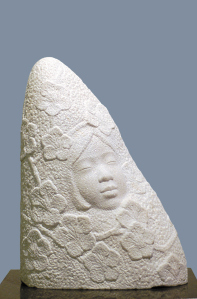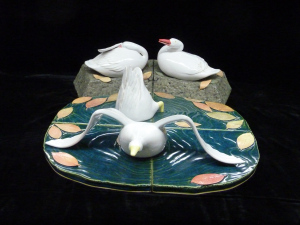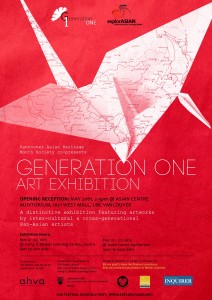In September 2006, the Irving K. Barber Learning Centre at the University of British Columbia Library announced the BC History Digitization Program. The focus of the program is to promote increased access to British Columbia’s historical resources, including providing matching funds to undertake digitization projects that will result in free online access to our unique provincial historical material. Below is a list of successful applicants for 2008.
| Project Title: Medical Artefact Digitization and Access Project – Phase II Organization: British Columbia Medical Association Amount:$8,000.00Description: This project will continue the work begun in 2007 to digitize medical artifacts from the museum’s holdings. These objects illustrate medical practice in British Columbia, including instruments used by medical practitioners over the last 150 years.BCMA Medical Museum |
| Project Title: Surrey Leader Press Negatives Project Organization: City of Surrey Archives Amount: $3,495.00Description: The City of Surrey Archives has a long-standing and very fruitful relationship with the City’s primary newspaper, The Surrey Leader (founded 1929). In 1992, a very substantial donation of the Leader’s photographic negatives (approximately 95,000 images) was made to the Archives by the editor, Andrew Holota. This project will digitize and make available about 3,000 of these images.SAMOA Discovering Surrey’s Past, Online |
| Project Title: Northern BC Historical and Economic Explorations – Photographs Digitization and Access Project Organization: Northern BC Archives, UNBC Amount: $3,500.00Description: In t heir 2007 funded project, the Northern BC Archives made over 2000 slides created by Northwood Pulp & Timber Ltd. available online. These document 35 years of natural resource industry activity in the Central Interior of B.C. This project will continue the work begun in 2007 and digitize images related to early 20th century exploratory expeditions to Northern BC conducted by stakeholders considering economic developments in its regions.Northwood Pulp and Timber Ltd. fonds |
| Project Title: NVMA Maps and Plans Digitization Project Organization: North Vancouver Museum and Archives Amount: $3,000.00Description: The North Vancouver Museum and Archives will digitize 200 significant items from its Maps and Plans collection. The group of 200 as a whole will represent the City and District equitably, and exhibit chronological depth, and geographic and topical breadth.As Dreamt, As Built: Maps and Plans of North Vancouver [N.B.: Select either “architectural plan” or “map” from the “Media Type” menu, enter your search term(s) and click “Search.”] |
| Project Title: Prince George Newspaper Digitization Project Organization: Prince George Public Library, UNBC, CNC Amount: $15,000.00Description: The Prince George Newspaper Digitization Project is a collaboration of the Prince George Public Library, the College of New Caledonia Library (CNC), the Geoffrey R. Weller Library and the Northern BC Archives at the University of Northern British Columbia (UNBC). With the consent and support of the Prince George Citizen publisher, the collaborators joined together in 2007 in this shared project to digitize the Prince George Citizen and six early newspapers beginning in 1909. The collaboration continues in year two of this multi-phase project. In 2008 and 2009 the library will digitize the Prince George Citizen from 1961 to 1966.Prince George Newspapers |
| Project Title:Digitization of Nitrate and Acetate Negatives Organization: Prince Rupert City and Regional Archives Amount: $3,030.00Description: The project consists of scanning approximately 1000 nitrate and acetate negatives from Prince Rupert’s early photographers such as J. Dennis Allen, Ernest A. Woods, and W.W. Wrathall. The negatives depict the early history of Prince Rupert and the surrounding area.Prince Rupert City & Regional Archives Photo Collection |
| Project Title: Digitization of the Cariboo Observer Newspaper (1908-1967) Organization: Quesnel and District Museum and Archives Amount: $15,000.00Description: The Cariboo Observer will celebrate its 100th anniversary in August 2008. The Quesnel & District Museum and Archives will digitize the newspaper so that it can be retrieved and browsed by issue, or searched by key words selected by the reader/researcher. This phase of the project will digitize the first 60 years of the paper (1908-1967).Quesnel Cariboo Observer |
| Project Title: Hands Off! Responsibly Opening the Doors to Northeastern BC’s Fossil Resource Collections… Organization: Tumbler Ridge Museum Foundation and Peace Region Palaeontology Research Centre Amount: $15,000.00Description: This project will create an online database of 3-dimensional digital replica images and 2-dimensional digital images of fossil specimens collected from Northeastern British Columbia and archived at the Peace Region Paleontology Centre Collections facility, the natural history branch of the Tumbler Ridge Museum Foundation.This project is still in progress and will eventually be hosted from the Peace Region Palaeontology Research Centre (P.R.P.R.C.) |
| Project Title: Open Reel Video Digitization: Best Practices on a Budget Organization: Union of BC Indian Chiefs Resource Centre Amount: $15,000.00Description: This project will develop, employ, and distribute specific tools, procedures, techniques, and workflows to digitize ½” open reel helical scan EIAJ video tape at minimal expense. Materials to be digitized include hundreds of archival video reels recorded by UBC IC staff in the 1970s. This footage has extremely high historical value for anyone researching or interested in political issues that affect First Nations in British Columbia.UBCIC 7th Annual General Assembly |
| Project Title: Bill Silver Newspaper Collection Organization: Vanderhoof Public Library Amount: $11,000.00Description: This project will digitize the weekly newspaper Nechako Chronicle and its successors, issues dating from 1920-1983. These newspapers record the development of the community of Vanderhoof and other nearby communities of Fort St. James, Fort Fraser, Fraser Lake, and several First Nations communities.Bill Silver Digital Newspaper Archive |
| Project Title: Robert Bateman Photographic Digitization Project Organization: Royal Roads University Foundation Amount: $12,600.00Description: A total of 3200 photographic slides representing the BC portion of the Bateman legacy will be digitized for this project. The Bateman archives reflect their role in environmental protection, their family life, and their artistic output.Robert Bateman Digital Archives |
| Project Title: Sechelt Community Archives Digitization of Historical Images Organization: Sechelt Community Archives Amount: $9,840.00Description: This project will digitize the 5700 photographs, negatives and slides housed in the Sechelt Community Archives. These images are part of the Helen Dawe Collection of materials relating to the history of the Village of Sechelt, and reflect the history of the village and the Sunshine Coast.Sechelt Community Archives Historical Photographs |
| Project Title: UBC Virtual Theatre Resource Organization: UBC Dept of Film, Theatre, and Creative Writing Amount: $10,000.00Description: Theatre at UBC is digitizing their multimedia theatre archives, which chart UBC’s part in the birth of a regional theatre and the development of regional and guest theatre artists at UBC. The archives is composed of nine series, including an extensive range of photos, costume renderings, sound recordings, and moving images.This project is still in progress. |
| Project Title: BC Printing and Book Arts Digitization Project Organization: Simon Fraser University Library Amount: $9,600.00Description: The BC Printing and Book Arts Collection contains more than 500 items, including books, illustrations, broadsides, artwork, and other ephemera, from more than 30 provincial presses. The digitization of these materials will make an important part of BC’s cultural history freely and easily available to community members via the Internet. The flagship piece of this collection is the work of Jim Rimmer who is an esteemed typographer, designer, printer, and publisher based in New Westminster.BC Printing and Book Arts Digitization Project |
| Project Title: Colonial Dispatches for the Colony of BC 1858 Organization: University of Victoria Libraries Amount: $10,000.00Description: The Colonial dispatches, which were sent by the governors of the Colonies of Vancouver Island and British Columbia (1846-1871) to the Colonial Office in London, and the responses, are arguably the most important early documentation available concerning the history of the colonies and early relationships with the indigenous people of B.C. There are 28 volumes of dispatches; this project will make the 1858 volume, minutes, enclosures, correspondence, and transcripts available and searchable online.The Despatches of British Columbia |
| Project Title: O’Keefe Ranch Archives Digitization Organization: O’Keefe Ranch and Interior Heritage Society Amount: $4,000.00Description: The O’Keefe Family lived on their ranch, north of Vernon, from 1867 until 1977 and, over that time, accumulated a large collection of photographs, documents and other archival material relating to their lifestyle and occupancy of the site. The collection forms a unique record of one family’s occupancy of a ranching property for over a century. The project will make this valuable research tool available online to students and other researchers.This project is still in progress. |
| Project Title: Unique Photographs of Early Bowen Island Organization: Bowen Island Historical Society Amount: $9,000.00Description: The photographs in the Bowen Island historical Society’s collections are a pictorial record of the history and development of Bowen Island from the earliest habitation to the present day. A portion of the collection has already been digitized; this project will enhance the existing database, create the ability to search and display the collection through a web browser, make the 1,700 digitized photos available through the Internet and complete the digitization of a further 3,000 photos which will also be accessible through the internet.Online Photographic Database |
| Project Title: Dr. Gerald Straley’s Historical Collection of the Flora of BC Organization: UBC Herbarium Amount:$10,500.00Description: Dr. Gerald Straley (1945-1997) was a well known, respected and admired botanical expert on both cultivated plants and the natural flora of British Columbia. During his career at UBC, he was a research scientist and curator at the UBC Botanical Garden and the Director of the UBC Herbarium. This project will digitize Straley’s pressed plant collection, archival documents, and line-drawings.Dr. Gerald Straley’s historical collection of the flora of British Columbia digitization project |
| Project Title: Bella Coola Valley Digital Heritage: Phase II Organization: Bella Coola Valley Museum Society Amount: $6,000.00Description: The Bella Coola Valley Museum Society will digitize approximately 1000 images from their collection and add the images to the Society’s searchable database. The images portray logging practices between 1930 and 1957, and in the early 1970s and 1980s, and represent the history of Ocean Falls during its time as a booming city.Bella Coola Photograph Collection |
| Project Title: Online Photograph Database Project – The Otto Landauer Photograph Collection Organization: Jewish Museum and Archives Amount: $8,500.00Description: The Jewish Museum and Archive of BC’s online photograph database is an ongoing initiative to make the Museum’s collections available on the internet. In 2008-2009, the JMABC plans to digitize a portion of its Otto F. Landauer – Leonard Frank Photograph collection. Landauer spent part of his career photographing industrial and architectural activities in British Columbia and capturing the changing urban landscape of the province in a unique and beautiful way.The Otto Landauer Photograph Collection (Artefacts Canada) OR |
For more information please contact:
Mimi Lam
Coordinator
BC History Digitization Program
bc.historydigitization@ubc.ca
Bronwen Sprout
Head
Digital Programs and Services
 The Irving K. Barber Learning Centre and UBC
The Irving K. Barber Learning Centre and UBC 




